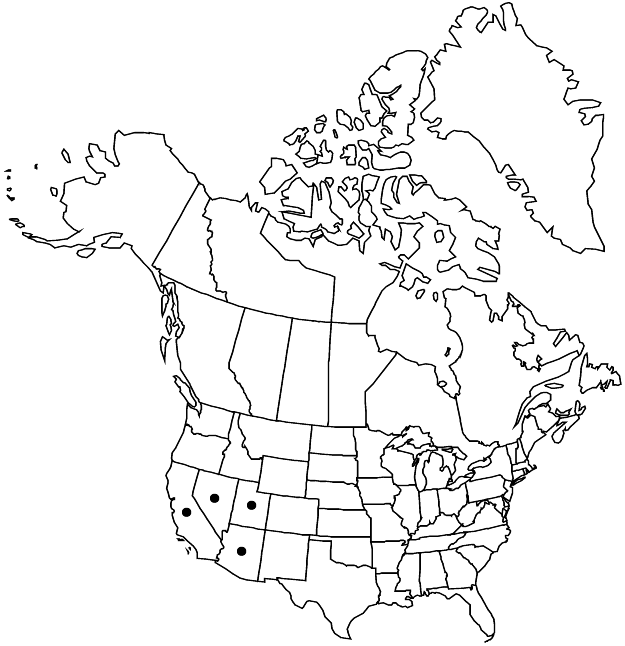Eriogonum fasciculatum var. polifolium
Proc. Amer. Acad. Arts 8: 169. 1870.
Shrubs or subshrubs, compact to spreading, 2–5(–8) × 2–20(–30) dm, tomentose to canescent and grayish. Aerial flowering stems thinly tomentose to canescent, rarely glabrous. Leaf blade usually oblanceolate, 0.6–1.8 × (0.1–)0.2–0.6 cm, canescent on both surfaces or densely grayish-tomentose abaxially and canescent adaxially, margins plane or infrequently revolute. Inflorescences capitate to cymose-umbellate, rarely cymose; branches tomentose to canescent, rarely glabrous. Involucres turbinate-campanulate to campanulate, 2.5–3.5 × 2–3 mm, canescent. Perianths pubescent. 2n = 40.
Phenology: Flowering year-round.
Habitat: Sandy to gravelly flats and slopes, saltbush, blackbrush, and creosote bush communities, pinyon-juniper or juniper woodlands
Elevation: (60-)300-2500 m
Distribution

Ariz., Calif., Nev., Utah, Mexico (Baja California, Sonora).
Discussion
Variety polifolium is a widespread, common to abundant, or occasionally dominant shrub of the Mojave and Sonoran deserts in Arizona, southern California, southern Nevada, and southwestern Utah. This is the common tetraploid expression of the species. It is occasionally planted as an ornamental in the more arid regions of the American Southwest.
Plants were used by several groups of Native Americans as a medicinal plant to treat a variety of symptoms (D. E. Moerman 1986). It was used also in the practice of witchcraft by the Navajo, in a potion against evil spells.
Selected References
None.